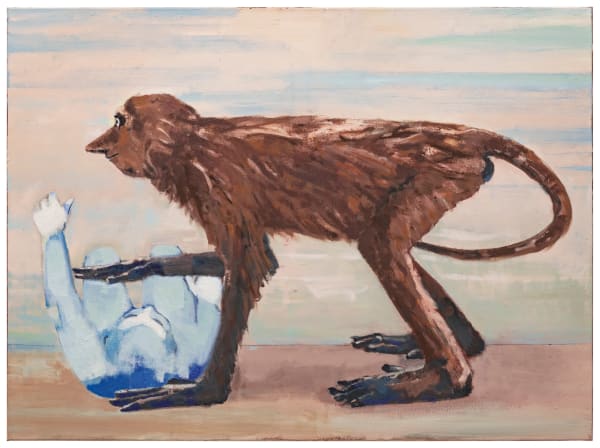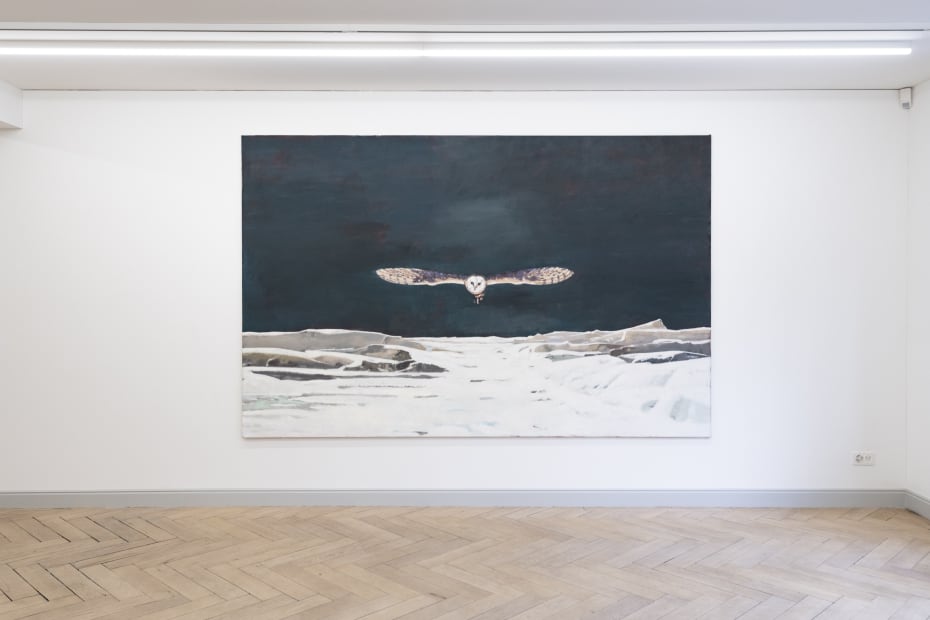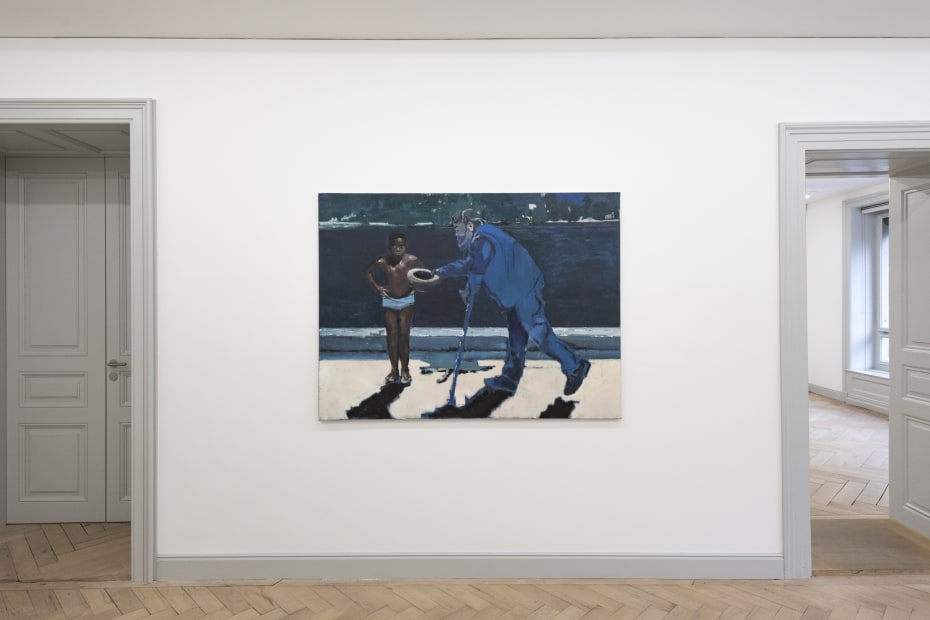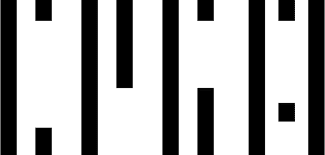Marc-Antoine Fehr: OpéraGalerie Peter Kilchmann, Rämistrasse, Zurich
Galerie Peter Kilchmann is pleased to announce Opera, the fourth solo exhibition of Swiss artist Marc-Antoine Fehr (*1953 in Zurich; lives and works in Zurich and Burgundy) at the gallery. The exhibition comprises a new group of works, which for the first time breaks away from the artist's large, coherent cycles of paintings in terms of content.
Familiar key motifs from Fehr's entire oeuvre form a new pictorial world of "natures mortes", genre scenes and landscapes that focuses on Fehr's characteristic play with reality and artistic staging as a unifying link. On display are paintings in oil on canvas in large and medium format as well as a selection of works on paper.
In Marc-Antoine Fehr's painting, the stage as a place that depicts life has played a decisive role since the beginning of his career in the 1970s. The source of inspiration of his paintings are real figures, props or “set pieces”, as Fehr himself calls them, taken from the artist's direct environment. It is only through their coming together that they are formed into dream images with a strong narrative character. Hence, it is no coincidence that the ambiguous title of the exhibition - Opera - in addition to its Latin meaning, which can denote both "works" and "effort", also refers to the stage art form of musical drama.
Galerie Peter Kilchmann is pleased to announce Opera, the fourth solo exhibition of Swiss artist Marc-Antoine Fehr (*1953 in Zurich; lives and works in Zurich and Burgundy) at the gallery. The exhibition comprises a new group of works, which for the first time breaks away from the artist's large, coherent cycles of paintings in terms of content. Familiar key motifs from Fehr’s entire oeuvre form a new pictorial world of natures mortes, genre scenes, and landscapes that focuses on Fehr's characteristic play with reality and artistic staging as a unifying link. On display are paintings in oil on canvas in large and medium formats as well as a selection of works on paper.
In Marc-Antoine Fehr's painting, the stage as a place that depicts life has played a decisive role since the beginning of his career in the 1970s. The source of inspiration for his paintings are real figures, props, or “set pieces”, as Fehr himself calls them, taken from the artist's direct environment. It is only through their coming together that they are formed into dream images with a strong narrative character. Hence, it is no coincidence that the ambiguous title of the exhibition - Opera - in addition to its Latin meaning, which can denote both "works" and "effort", also refers to the stage art form of musical drama.
-
 Marc-Antoine FehrThe walk of the blind man, 2022Oil on canvas100 x 250 cm (39 ⅜ x 98 ⅜ in.)
Marc-Antoine FehrThe walk of the blind man, 2022Oil on canvas100 x 250 cm (39 ⅜ x 98 ⅜ in.) -
 Marc-Antoine FehrZurich II, 2022Oil on canvas140 x 170 cm (55 ⅛ x 66 ⅞ in.)
Marc-Antoine FehrZurich II, 2022Oil on canvas140 x 170 cm (55 ⅛ x 66 ⅞ in.) -
 Marc-Antoine FehrTrois fakirs de cirque, 2021Oil on canvas100 x 160 cm (39 ⅜ x 63 in.)
Marc-Antoine FehrTrois fakirs de cirque, 2021Oil on canvas100 x 160 cm (39 ⅜ x 63 in.) -
 Marc-Antoine FehrMa Chouette, 2021Oil on canvas120 x 90 cm (47 ¼ x 35 ⅜ in.)
Marc-Antoine FehrMa Chouette, 2021Oil on canvas120 x 90 cm (47 ¼ x 35 ⅜ in.) -
 Marc-Antoine FehrWinterabend in Zürich, 2023Oil on canvas60 x 90 cm (23 ⅝ x 35 ⅜ in.)
Marc-Antoine FehrWinterabend in Zürich, 2023Oil on canvas60 x 90 cm (23 ⅝ x 35 ⅜ in.) -
 Marc-Antoine FehrLe train de Loïc, 2011Oil on canvas60 x 73 cm (23 ⅝ x 28 ¾ in.)
Marc-Antoine FehrLe train de Loïc, 2011Oil on canvas60 x 73 cm (23 ⅝ x 28 ¾ in.)
63 x 76 cm (24 ¾ x 29 ⅞ in.), framed -
 Marc-Antoine FehrLe bassin de la Villette, 2020Oil on canvas120 x 160 cm (47 ¼ x 63 in.)
Marc-Antoine FehrLe bassin de la Villette, 2020Oil on canvas120 x 160 cm (47 ¼ x 63 in.) -
 Marc-Antoine FehrLes Vitrines, 2021Oil on canvas120 x 160 cm (47 ¼ x 63 in.)
Marc-Antoine FehrLes Vitrines, 2021Oil on canvas120 x 160 cm (47 ¼ x 63 in.) -
 Marc-Antoine FehrPressy, avril 2022, 2022Oil on canvas33 x 41 cm (13 x 16 ⅛ in.)
Marc-Antoine FehrPressy, avril 2022, 2022Oil on canvas33 x 41 cm (13 x 16 ⅛ in.) -
 Marc-Antoine FehrOpéra, 2021-23Oil on canvas160 x 130 cm (63 x 51 ⅛ in.)
Marc-Antoine FehrOpéra, 2021-23Oil on canvas160 x 130 cm (63 x 51 ⅛ in.) -
 Marc-Antoine FehrHiver à Pressy, 2022Oil on canvas160 x 115 cm (63 x 45 ¼ in.)
Marc-Antoine FehrHiver à Pressy, 2022Oil on canvas160 x 115 cm (63 x 45 ¼ in.) -
 Marc-Antoine FehrLa Nuit, 2020Oil on canvas210 x 320 cm (82 ⅝ x 126 in.)
Marc-Antoine FehrLa Nuit, 2020Oil on canvas210 x 320 cm (82 ⅝ x 126 in.) -
 Marc-Antoine FehrLe Puits, 2020Oil on canvas, vintage masks41 x 50 cm (16 ⅛ x 19 ¾ in.), canvas
Marc-Antoine FehrLe Puits, 2020Oil on canvas, vintage masks41 x 50 cm (16 ⅛ x 19 ¾ in.), canvas
53 x 58 cm (20 ⅞ x 22 ⅞ in.), altogether -
 Marc-Antoine FehrKingdom of Death, 2021Gouache on paper57 x 81 cm (22 ½ x 31 ⅞ in.)
Marc-Antoine FehrKingdom of Death, 2021Gouache on paper57 x 81 cm (22 ½ x 31 ⅞ in.)
75 x 97 cm (29 ½ x 38 ¼ in.), framed -
 Marc-Antoine FehrLa grande parade, 2023Gouache on paper58 x 81.5 cm (22 ⅞ x 32 ⅛ in.)
Marc-Antoine FehrLa grande parade, 2023Gouache on paper58 x 81.5 cm (22 ⅞ x 32 ⅛ in.)
62.5 x 85 cm (24 ⅝ x 33 ½ in.), framed -
 Marc-Antoine FehrExtrait de "Walk of the Blind Man", 2019Gouache on paper22 x 96 cm (8 ⅝ x 37 ¾ in.)
Marc-Antoine FehrExtrait de "Walk of the Blind Man", 2019Gouache on paper22 x 96 cm (8 ⅝ x 37 ¾ in.)
34 x 108 cm (13 ⅜ x 42 ½ in.), framed -
 Marc-Antoine FehrExtrait de "Walk of the Blind Man", 2019Gouache on paper22 x 96 cm (8 ⅝ x 37 ¾ in.)
Marc-Antoine FehrExtrait de "Walk of the Blind Man", 2019Gouache on paper22 x 96 cm (8 ⅝ x 37 ¾ in.)
34 x 108 cm (13 ⅜ x 42 ½ in.), framed -
 Marc-Antoine FehrExtrait de "Walk of the Blind Man", 2019Gouache on paper22 x 96 cm (8 ⅝ x 37 ¾ in.)
Marc-Antoine FehrExtrait de "Walk of the Blind Man", 2019Gouache on paper22 x 96 cm (8 ⅝ x 37 ¾ in.)
34 x 108 cm (13 ⅜ x 42 ½ in.), framed -
 Marc-Antoine FehrLa Rochelle, 2020Oil on canvas100 x 135 cm
Marc-Antoine FehrLa Rochelle, 2020Oil on canvas100 x 135 cm -
 Marc-Antoine FehrSynkretistentreffen, 2021Gouache on paper44 x 81.5 cm (17 ⅜ x 32 ⅛ in.)
Marc-Antoine FehrSynkretistentreffen, 2021Gouache on paper44 x 81.5 cm (17 ⅜ x 32 ⅛ in.)
47 x 85 cm (18 ½ x 33 ½ in.), framed
Please note that availability and prices are subject to change.
For further information please contact Fabio Pink: fabio@peterkilchmann.com
MARC-ANTOINE FEHR
Opera
February 3 - April 1, 2023
Opening: Thursday, February 2, 6-8 pm
Rämistrasse 33, Zurich
Galerie Peter Kilchmann is pleased to announce Opera, the fourth solo exhibition of Swiss artist Marc-Antoine Fehr (*1953 in Zurich; lives and works in Zurich and Burgundy) at the gallery. The exhibition comprises a new group of works, which for the first time breaks away from the artist's large, coherent cycles of paintings in terms of content. Familiar key motifs from Fehr’s entire oeuvre form a new pictorial world of “natures mortes”, genre scenes and landscapes that focuses on Fehr's characteristic play with reality and artistic staging as a unifying link. On display are paintings in oil on canvas in large and medium format as well as a selection of works on paper.
In Marc-Antoine Fehr's painting, the stage as a place that depicts life has played a decisive role since the beginning of his career in the 1970s. The source of inspiration of his paintings are real figures, props or “set pieces”, as Fehr himself calls them, taken from the artist's direct environment. It is only through their coming together that they are formed into dream images with a strong narrative character. Hence, it is no coincidence that the ambiguous title of the exhibition - Opera - in addition to its Latin meaning, which can denote both "works" and "effort", also refers to the stage art form of musical drama.
The opera forms the frame story for the eponymous work (2021-23, 160 x 130 cm, see invitation card), which can be seen as the starting point of the exhibition. Fehr once remarked that his compositions are always preceded by an initial impulse, a concrete event. For the painting Opéra, it was a video of the French animal protection organization L214, which had been secretly recorded during an undercover operation in a slaughterhouse and reported the abuses there. The scene depicted in Fehr's painting is divided into two different subjects on the horizontal center axis: while the lower section shows an orchestra pit with cellists, the upper picture plane, slightly shifted backwards, suggests the stage set of an opera production. Processing the shocking impressions of the video, Fehr creates a backdrop in which a figure miming the opera singer is surrounded by the act of slaughter and the limp, hanging carcasses of lifeless cattle on a sparsely decorated stage.
Despite the fierceness of the upper scene, the pale yellows of the smooth, shimmering stage floor and the shades in the brown animal skins radiate an unexpected warmth. A rich blue in the singer's robe, and in the orchestra rows, recalls the lapis lazuli pigments of old masters like Fra Angelico. Bright light-reflecting parts lay an aesthetically beautiful glow over the musicians, while only the tail of the cow, falling from above, creates a connection between the two scenes, like the scroll-end of the double bass in Edgar Degas’ L'orchestre de l'opéra. In Opéra, the civilized society that pays homage to the musical arts is juxtaposed with a massacre (derived from the French term "macacre" for "butcher's shop") that it indirectly inflicts. By staging it as an opera, however, Fehr gives the very real subject a certain distance from the viewer and instead questions art about its purpose and legitimate motivation.
Out of this thought, in other works the content recedes into the background in order to offer a stage for the play with colors and forms of the individual picture fragments. The work Trois fakirs de cirque (2022, 100 x 160 cm) shows three magicians from the circus world demonstrating their spiritual powers in front of a cave entrance. But it is rather the painter's handling, such as the arrangement of the figures and the use of contrasting color nuances, that interest Fehr and suggest a slight reference to early Renaissance masters such as Bellini. Striking, firm brushstrokes shape the expressive boulders that line the shady cave entrance and contrast with the pastel flatness of the grainy sandy soil in the foreground.
In the work Les Vitrines (2022, 120 x 160 cm), fragments from memory are reassembled. The picture provides a view of an exhibition display case with taxidermied fish and moray eels from a natural history museum. The exhibits seem to float in space, while the shadowy faces of a group of visitors can be seen in the background. The room is bathed in warm gold, lending an unreal, dreamlike veil to the moment depicted. Components anchored in the reality of life are lifted out of context and rearranged.
The work Zurich (2022, 140 x 170 cm) occupies an individual position in the exhibition. The work shows an everyday scene that is very poetic in its decelerated calmness. A man, no more than a small figure sketched with a few brushstrokes, is rowing up Zurich’s Limmat river in a traditional stand-up rowing boat, a so-called Weidling. Fehr had recorded this scene with a film camera from the Helmhaus in 2011 and had previously worked it into a painting (Zurich I, 2015). Although the work is the only one in the exhibition to depict an unaltered observation taken from real life, the scene seems like something out of a dreamy novella. The mighty shadow under the barge, however, also hints at the near shore and triggers associations with Böcklin's Isle of the Dead. The Weidling glides gently over the calm surface of the river, making even rings in the water. The reduced, muted palette with soft pale blue and pearl grey tones is a recurring stylistic device in Fehr's oeuvre and bathes the scene in a subdued dusk light.
In connection with the paintings, a new collection of gouaches has been created, which thematically complement the exhibition. Through the spontaneous and sketchy execution, which the glazing technique of gouache on paper in particular allows, the individual motifs of the large paintings are revived and their narratives retold. Although, they are not preliminary sketches, many of the gouaches play an important role in the process of creating the paintings and thus form an elementary component of the entire group of works.
Marc-Antoine Fehr's works have been exhibited nationally and internationally since the late 1970s. Currently, the Musée Marmottan Monet in Paris is showing the solo exhibition Marc Antoine Fehr: Les Dialogues Inattendus (until June 25, 2023). Major solo exhibitions since 2011 have been presented at the following institutions: Château de Gruyères (2022); Villa Flor, S-chanf (2020); Kunstmuseum Olten (2018); Spam Contemporary, Düsseldorf; Centre Culturel Suisse, Paris (both 2015); Hostellerie de Saint-Hugues, Cluny (2014) and Helmhaus Zurich (2011). Fehr has also participated in important group exhibitions, including at Museum Franz Gertsch, Burgdorf (2020); Bündner Kunstmuseum, Chur (2020); Museum Kunstpalast, Düsseldorf (2016); Musée de Pully (2016); Aargauer Kunsthaus, Aarau, (2016); Museum Sinclair-Haus, Bad Homburg (2015); Galleria d'Arte Moderno, Milan (2015) and Graphische Sammlung der ETH (2015). Monographic catalogues have been published on occasion of the exhibitions at the Centre Culture Suisse and the Helmhaus Zurich and are available at the gallery. Works by Fehr are part of the collections of the following institutions (selection): Aargauer Kunsthaus, Aarau; Bündner Kunstmuseum, Chur; Graphische Sammlung der ETH, Zurich; Graphische Sammlung der Schweizerischen Nationalbibliothek, Bern; Kunstmuseum Olten; Kunstmuseum Solothurn; Musée d'art et d'histoire de la ville de Neuchâtel; Museum Frieder Burda, Baden-Baden; Nationale Kunstsammlung Bern; Kunsthaus Zürich and Sammlung der Stadt Zürich, as well as in countless private collections.
For further information please contact Fabio Pink (fabio@peterkilchmann.com).






























